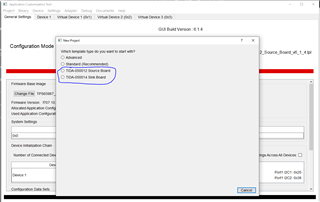Hi
I'm designing USB PD dongle with one port as power sink and another port as power source.
I'd like to have a feature like VBUS power pass through. This means the sink port gets charger's PDP and the source port advertises PDP which is the charger's PDP minus own consuming power.
I think it's reasonable way to switch internal Virtual Devices for changing the PDP advertised from source port.
Here are my questions.
1. Is there any documents describing how to use Virtual Devices on Configuration Data Sets by Application Customization Tool?
2. Do you have other way to have a feature like VBUS power pass through?



